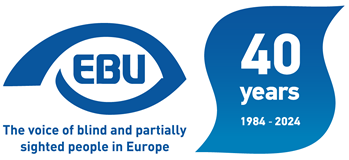Blind and partially sighted persons are able to fly throughout Europe with their guide dog with them, thanks to Regulation EC1107/2006 which concerns the rights of disabled persons and persons with reduced mobility when travelling by air. ECAC is the European enforcement body for the regulation, along with the national enforcement bodies of each country.
The regulation refers to ‘recognized assistance dog’ but there is no definition of this term. A definition was previously included in ECAC Document 30, which defined it as a dog that has been trained to assist a disabled person by an organisation that is a member of Assistance Dogs International (ADI) and/or the International Guide Dog Federation (IGDF). The definition was removed several years ago at the request of an ECAC member that did not consider it to be compatible with their domestic arrangement.
Issues when travelling by air with a guide dog
- Guide dogs and other assistance dogs are entitled to travel free of charge with their handler in the cabin of the aircraft. They need a pet passport (showing rabies vaccinations and other medical treatment) and an identification card; airport staff can also require a letter from the guide dog school saying that the dog is properly trained.
- Although guide dog handlers can book flights online, the guide dog must usually be booked separately – by a series of emails or a phone call, which can become long and costly. One notable exception is easyJet, who offer online booking and seat assignment for the guide dog as well.
- Each airline has its own rules about how much notice must be given for a guide dog to travel. Although it is seldom a problem, it can discriminate against a guide dog handler in an emergency, when needing to travel on short notice for business or a family emergency.
- Airlines across Europe work to the same rules but can interpret them in different ways or invent additional ones. For example:
- Some airlines only allow one dog per flight, which can be discriminatory when travelling to, say, a guide dog conference or when two guide dog handlers are sharing one sighted guide.
- In another case a guide dog handler from Malta had to stay alone in a hotel in Amsterdam after his meeting finished because the airline would not let the guide dog travel on a flight with an intermediate stop and he had to wait several days for a non-stop flight.
- Another traveller was told at check-in that he needed to muzzle his guide dog, although the dogs are not trained to wear a muzzle and it could negate their training. When he said that he never carried a muzzle for his dog, the visually impaired traveller was told to browse the airport shops for one.
- Another guide dog handler, checking in for the 65-minute flight from Amsterdam to London, was asked to produce the guide dog’s diaper. He had never been asked that before, even for transatlantic flights
- Although airport and airline staff are trained, very few have actually encountered a guide dog. They can leave the passenger standing while they go off to consult their supervisor. If they do not know the rules or do not apply them correctly, the passenger can be delayed so much that they miss their flight.
- Until the end of 2020, nothing about travelling with a guide dog between European countries will change because of Brexit. Current negotiations will determine what happens after that.
- Malta, Finland, Ireland and the UK have the special requirement that dogs entering from other countries must have recent worming treatment; however, the worming treatment is not required for travel between these four countries.
Benefits of travelling with a guide dog
Airport and airline staff as well as fellow travellers are very friendly toward the guide dog team, which can make travelling an enjoyable social experience. There is the extra benefit of having for free the extras that others have to pay for: seat assignment, fast-track security, priority boarding, fast track passport control and assistance through airports. Guide dogs seem to have no fear of flying and are paradigms of best canine behaviour while travelling.
What next?
The problems that need resolving are:
- to distinguish an assistance dog from a comfort, therapy or pet dog for access to public spaces
- to avoid the proliferation of fake assistance dogs on airplanes as has happened in North America
- to maintain the high standards of IGDF and ADI while opening up access for guide dogs that were trained elsewhere
- to provide the airline industry with a definition of ‘recognised assistance dog’ and a system of assessing, registering and identifying them
The relevant committee within CEN, the European standardisation body, called CEN/TC452 ‘Assistance Dogs’, is addressing these problems. Because standards are developed by consensus and countries adopt them voluntarily, it will take several more years to complete the project. Experts are looking to develop an international standard for assistance dogs in the future.
By Judith Jones
Judith Jones is Executive Director of the European Guide Dog Federation and Convenor of CEN/TC452/WG6 ‘Assistance Dogs – Accessibility and Universal Access’

